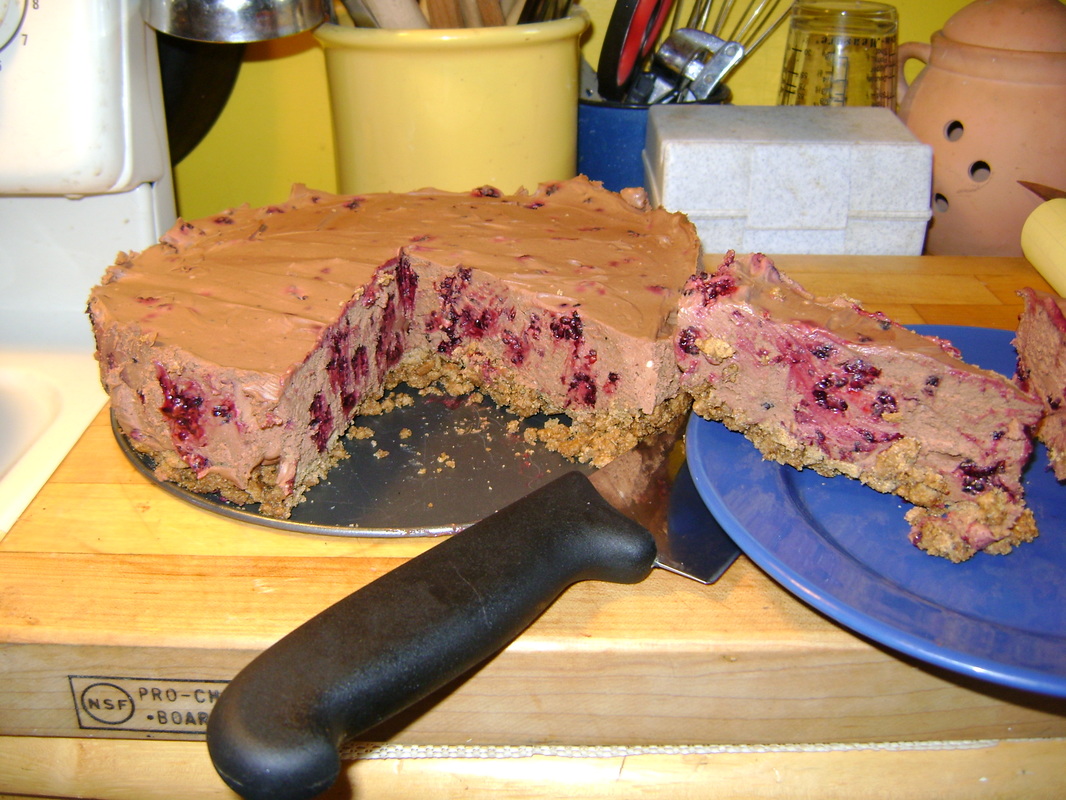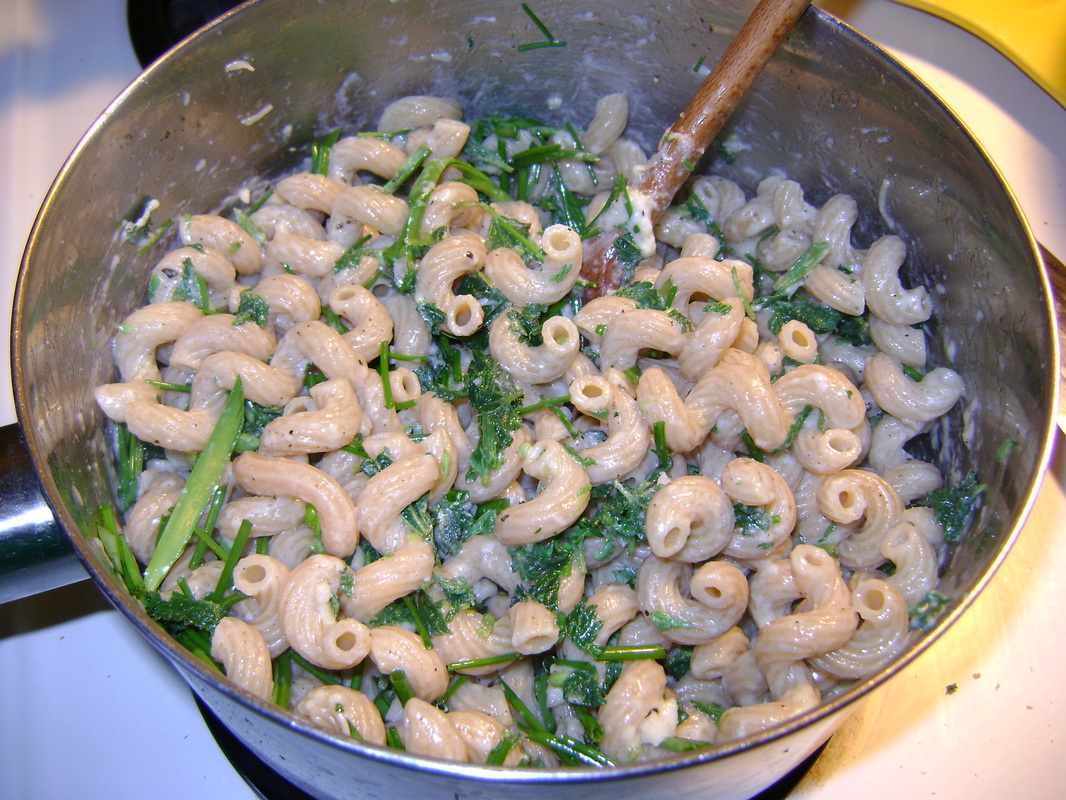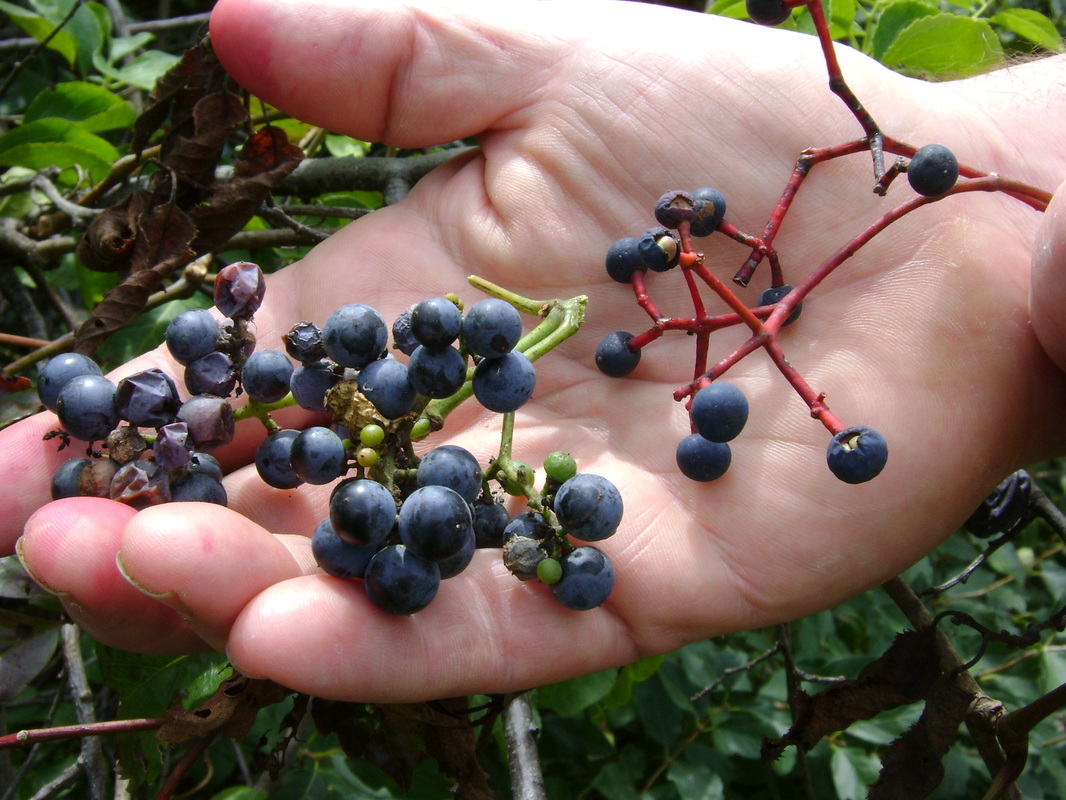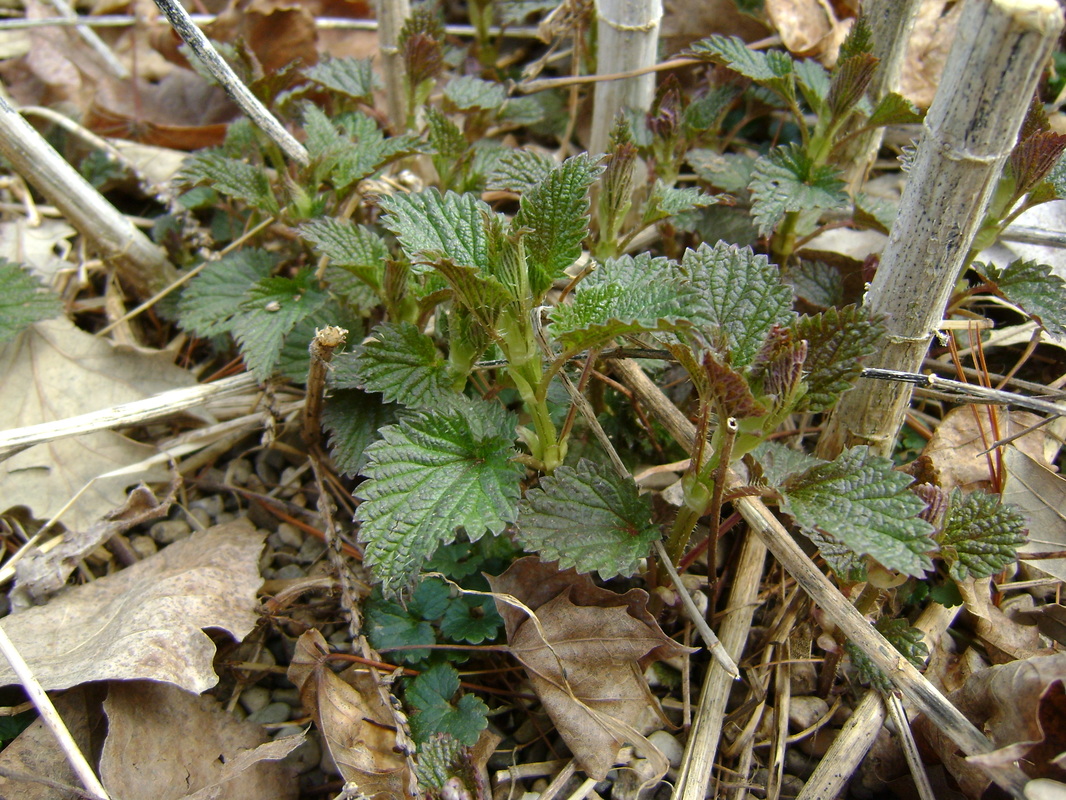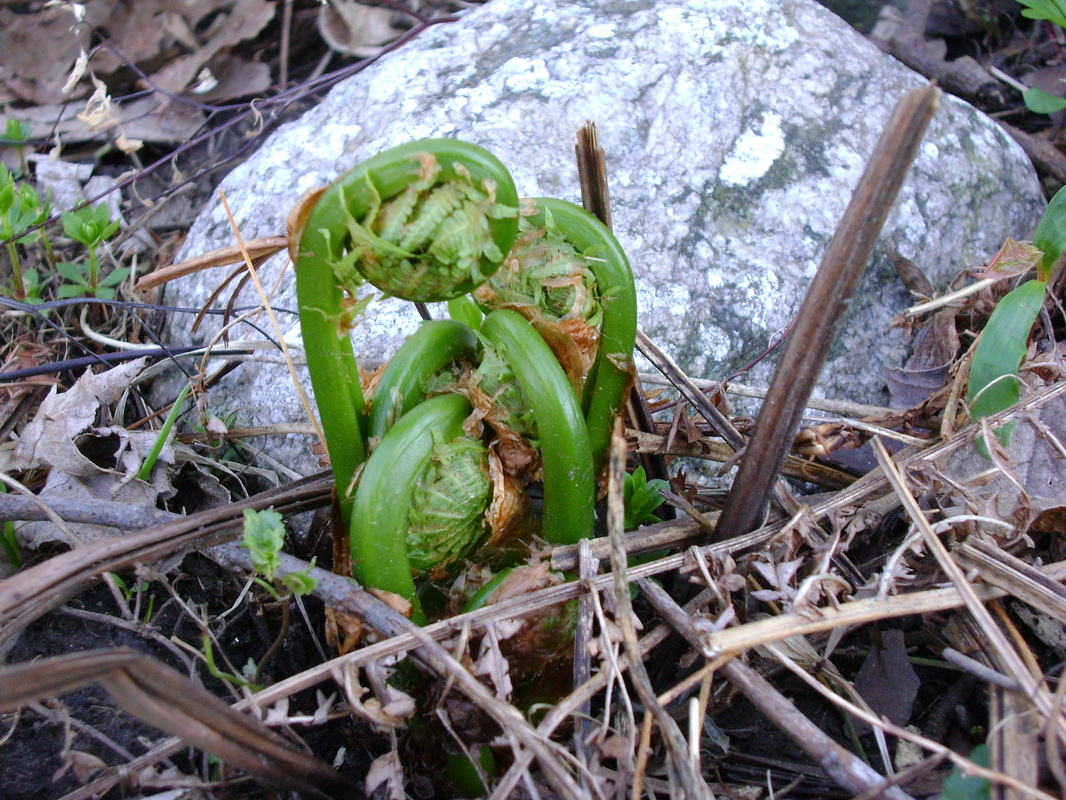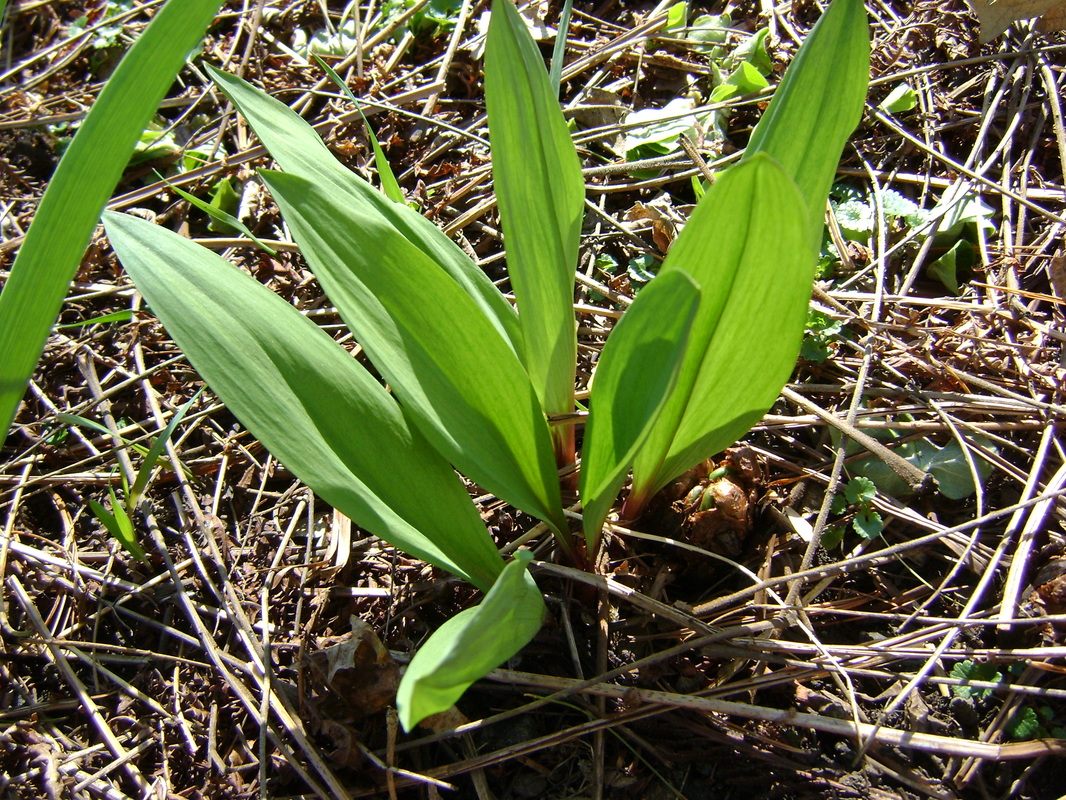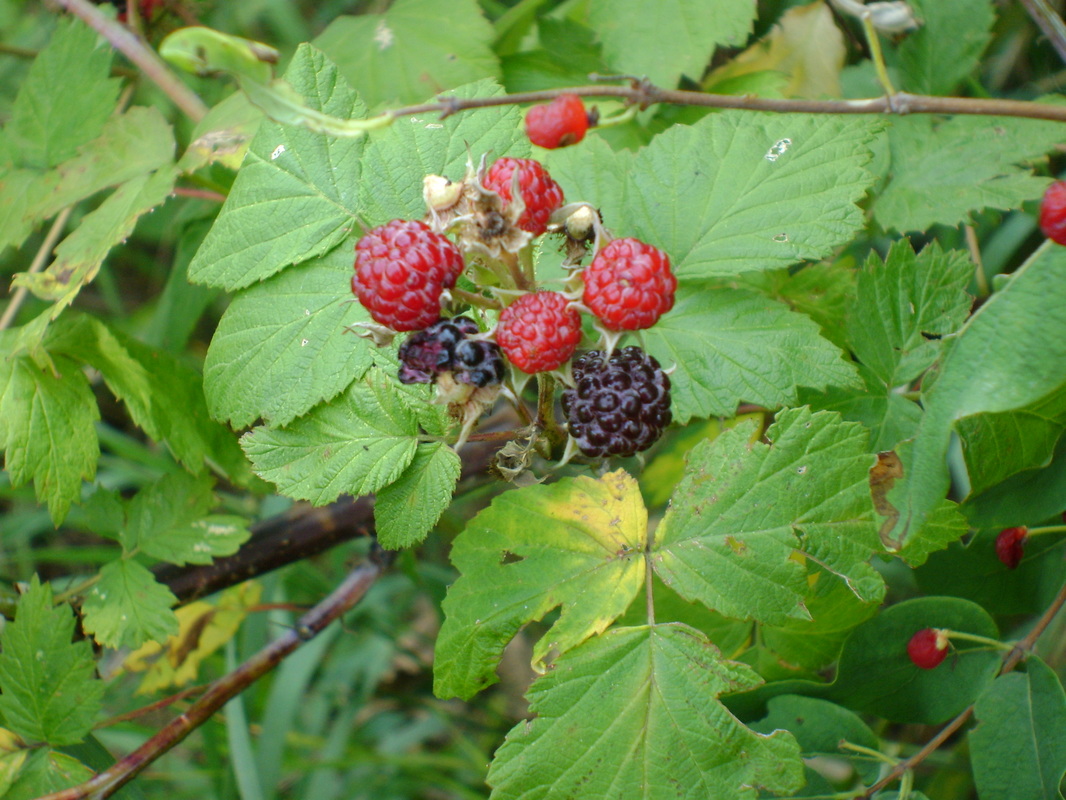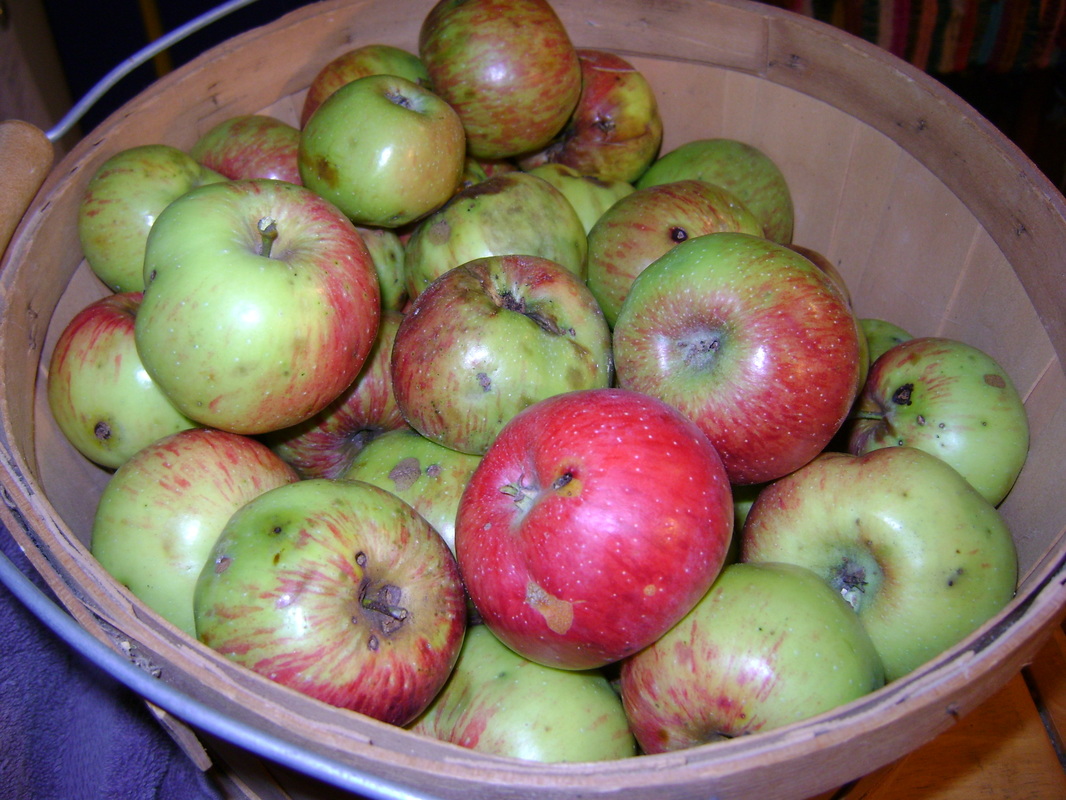INTRODUCTION:
From Theresa: Learning permaculture principles taught me that it's easier to grow perennial foods instead of the usual annual vegetables that we're all familiar with, because annuals need to be started from seed every year, whereas perennials only have to be planted once. At the same time, I started learning how to forage for wild foods. The obvious combination of these two methods of feeding ourselves was to start "cultivating" wild foods in our own tiny yarden, so that we can forage at home, rather than having to travel to someone else's large acreage to gather food. Wild foods are also easy maintenance. They have that wonderful weedy attribute of being able to grow almost anywhere without help from us. In our yarden, wild raspberries and wild grapes grow happily under our black walnuts where I could never get the cultivated varieties to survive.
There are two ways to grow wild edibles in your own yard:
There are two ways to grow wild edibles in your own yard:
- Many native plants that are wild edibles can be purchased at nurseries or through garden catalogs.
- Alternately, if you let Nature have Her way, some of these wild edibles (what others call weeds), will show up in your garden and plant themselves. You just need to be able to recognize them as edible, and not kill them like most people would.
|
SAFETY PRECAUTIONS: Before you eat any of the wild edibles listed here, please read this:
|
Foraging in the Wild:
If you have a tiny yard like ours, you may find you want to supplement your foraging by going elsewhere.
We consider the nearby public bike path an extension of our yard, and find lots of food there.
Click to see our fun essay on wild foraging, including the well-supplied and well-dressed forager.
We consider the nearby public bike path an extension of our yard, and find lots of food there.
Click to see our fun essay on wild foraging, including the well-supplied and well-dressed forager.
EAT YOUR WILD YARD- THE RECIPES
Here we'll share some of the wild edibles in our yarden, including how to grow them and how to eat them.
We'll be adding more as our plants grow big enough to eat.
We're sorting them by the earliest time of harvest in our area, which is southwestern Wisconsin, Gardening Hardiness Zone 5.
We'll be adding more as our plants grow big enough to eat.
We're sorting them by the earliest time of harvest in our area, which is southwestern Wisconsin, Gardening Hardiness Zone 5.
APRIL/MAYSpring Tonics:
In early Spring, Nature gifts us with many nutritional plants that are known as Spring tonics- they provide us with lots of vitamins to energize our bodies after eating mostly preserved foods all Winter. These plants are unfortunately now considered to be weeds by most people, but some of us know better, and our bodies start to crave their rich greenness while we wait eagerly for them to pop out of the ground. In our yard, these early Spring "weeds" include nettles and chickweed. Other Spring edibles:
|
|
We've published a book that includes the above pages on Spring edibles, plus more.
|
|
|
AUGUST
|
Resources:
Here are some of my favorite field guides and books on wild edibles (click to see them on Amazon):
Nature's Garden: A Guide to Identifying, Harvesting, and Preparing Edible Wild Plants
by Samuel Thayer
Wild forging book. This author lives in Wisconsin so everything in the book is applicable to our area.
ISBN: 978-0-9766266-1-9.
Click to see this book.
Stalking The Wild Asparagus
by Euell Gibbons
A classic published in 1962 about edible weeds and wild foraging. Has very good instructions on preparing wild foods.
ISBN: 0-911469-03-6.
Click to see this book.
Wild Seasons: Gathering and Cooking Wild Plants of the Great Plains
by Kay Young
A wild foraging book with the best instructions I've seen so far for cooking, and more than the usual recipes. I finally know how to eat our prickly pear cactus without getting stuck by a needle.
ISBN: 0-8032-9904-4
Click to see this book.
by Samuel Thayer
Wild forging book. This author lives in Wisconsin so everything in the book is applicable to our area.
ISBN: 978-0-9766266-1-9.
Click to see this book.
Stalking The Wild Asparagus
by Euell Gibbons
A classic published in 1962 about edible weeds and wild foraging. Has very good instructions on preparing wild foods.
ISBN: 0-911469-03-6.
Click to see this book.
Wild Seasons: Gathering and Cooking Wild Plants of the Great Plains
by Kay Young
A wild foraging book with the best instructions I've seen so far for cooking, and more than the usual recipes. I finally know how to eat our prickly pear cactus without getting stuck by a needle.
ISBN: 0-8032-9904-4
Click to see this book.
Field Guides:
